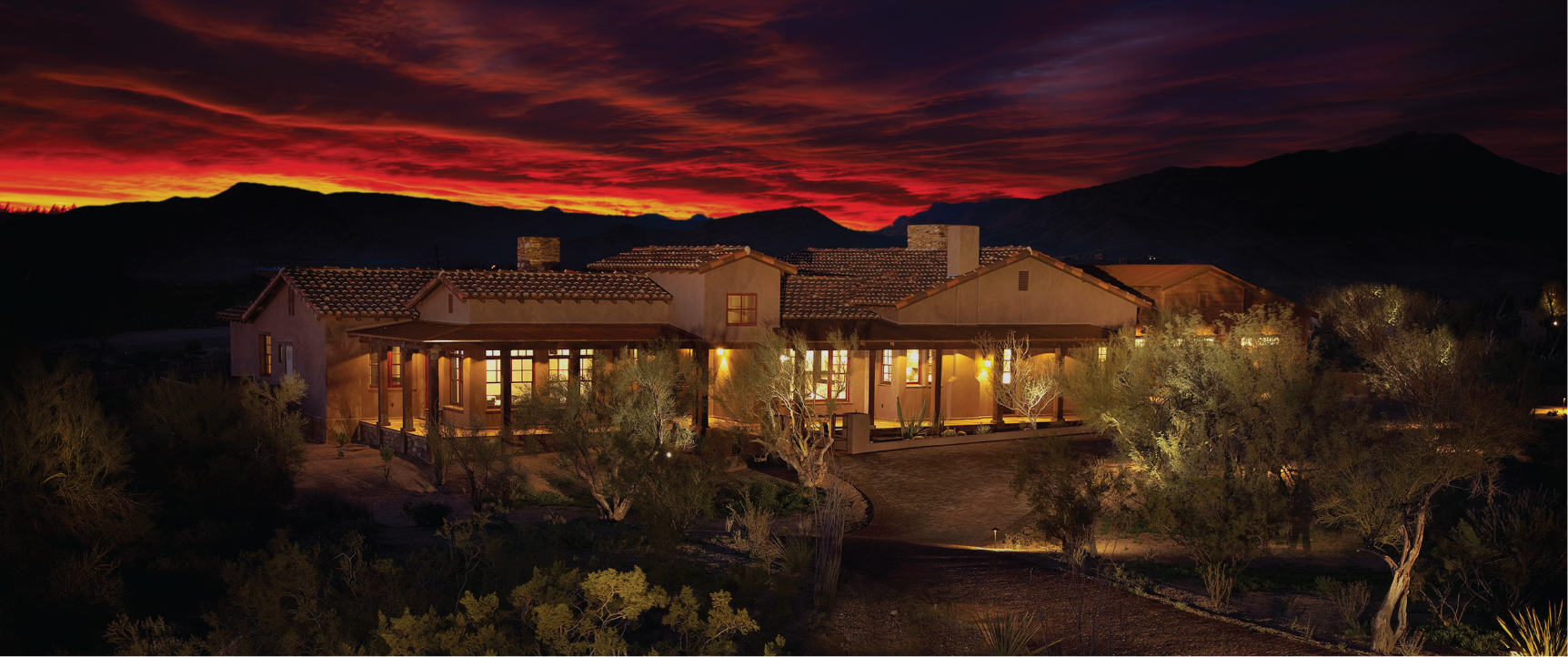The ‘feeling’ of Windmill…
One of the fundamental intentions of my planning and design work is to evoke pleasing and memorable emotional responses among all who encounter it. In the case of Windmill, my signature neighborhood in North Scottsdale, I wanted to evoke the comfortable and relaxed feelings of living in the luxury of traditional ranch style homes that nestle into the Sonoran desert and take advantage of the central Arizona climate in the foothills rising above Phoenix and the Valley of the Sun below.
An endearing quality of traditional architectural styles such as the Western Ranch, is the sense that they have long endured and matured to become a natural and integral feature of the landscape. The homes must therefore complement the mature desert landscape by exuding the patina of age from the start. As one first glimpses the neighborhood’s entry, they see a weathered “coyote” fence meandering thru the desert and a rough cast-in-place concrete monument anchoring the community’s name solidly to the earth; all together arousing a sense of maturity, strength, and permanence.
The raw steel entry gates evoke an old ranch entry that offers a comforting sense of security. Rather than adhering to the modern norm of connecting two points with a straight line, Windmill’s narrow roadway meanders thru the desert, naturally avoiding the property’s mature trees and cacti. As a result, Windmill feels quite unlike the pre-planned and economically engineered subdivisions so common in the desert today.
To better assure privacy and preservation of the fragile Sonoran Desert, the 20-acre Windmill property was down-zoned from the previously platted 16 one-acre lots, to its current offering of 8 lots averaging about 2 acres in size. Rather than “mass-grading” the 20 acres, we limited grading and construction disturbance to only the area required by each home, thus allowing greater distances between homes and distinguishing Windmill from nearby neighborhoods by the predominance of its mature native desert. Each of the homes was carefully situated on its lot to maximize its distant views as well as increase the distances between adjacent homes. To further enhance Windmill’s natural (rather than planned) feeling, I avoided orienting the homes parallel to the street and to each other. This subtle break from the norm is yet another way of giving Windmill a distinctive feeling without resorting to stylistic gimmicks.
Each of Windmill’s homes is different in both plan and elevation but, because the design of each was guided by the same set of planning principles and values, they appear visually distinct yet related, as if siblings of the same desert parentage. Windmill honors the heritage of the southwest and, like all regional vernaculars, its Western Ranch homes are indigenous responses to the region’s climate and material resources. Windmill feels different because it is a natural response to its location, and not derived from the ephemeral whims of architectural fashion. Thus anchored in the region’s cultural heritage assures that Windmill will remain “timeless” and that its naturally distinctive character will not only look better, but it will “feel” better as it ages.


Bob Bacon
March 14, 2020





